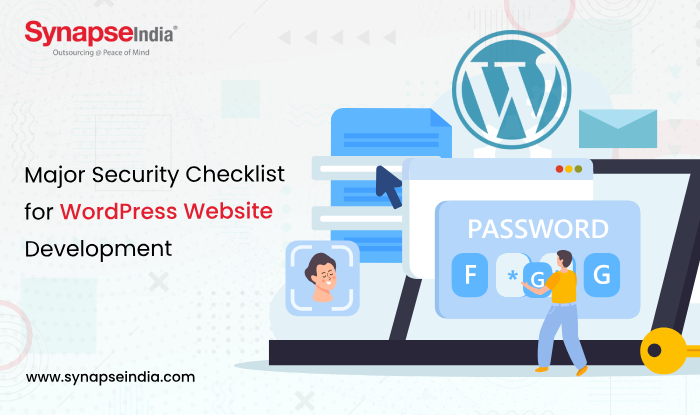 08 May 2024
08 May 2024
In the present digital environment, when having a strong online presence is crucial for both individuals and enterprises, WordPress website security is crucial. Since WordPress powers more than one-third of all websites, cyber risks and hacks have targeted it heavily. When developers start working on WordPress website development projects, security must be given top priority right away. Following a thorough security checklist is crucial for reducing risks and guaranteeing the integrity of WordPress websites, as it protects sensitive user data and guards against malevolent actors and potential vulnerabilities.
We will check the main security checklist for developing WordPress websites in this post. Let’s go with the best practices, preventative methods, and critical security measures that developers may use to strengthen WordPress websites against frequent attacks and weaknesses. This checklist is a useful tool for enhancing the security posture of WordPress websites at every stage of development, regardless of your experience level as a WordPress developer. It can help novices who are looking for advice on creating secure websites or seasoned professionals who want to strengthen their security procedures. Let's get started and equip ourselves to build dependable, dependable, and safe WordPress websites in a constantly changing digital environment.

Here's a major security checklist for WordPress website development:
Regularly update WordPress core, themes, and plugins to the latest versions to patch security vulnerabilities and ensure compatibility with the latest security standards.
Choose a reputable hosting provider that offers robust security features, including SSL/TLS encryption, firewalls, malware scanning, and regular backups.
Enforce strong password policies for user accounts, encourage the use of two-factor authentication (2FA), and limit login attempts to prevent brute-force attacks.
Restrict access permissions for users and roles to minimize the risk of unauthorized access to sensitive areas of the WordPress dashboard and files.
Set appropriate file permissions on WordPress files and directories to prevent unauthorized access or modification by malicious users.
Secure your website with HTTPS encryption to protect user data during transit and enhance trustworthiness and SEO rankings.
Install reputable security plugins such as Wordfence, Sucuri Security, or iThemes Security to monitor and protect against malware, brute force attacks, and other security threats.

Deploy a WAF to filter and monitor incoming web traffic, intercept malicious requests, and block suspicious IP addresses or patterns.
Prevent directory listing by disabling directory browsing to prevent unauthorized access to sensitive files and directories on the server.
Implement automated backups of your WordPress website, including both files and databases, and store backups securely offsite to facilitate quick recovery in case of data loss or security incidents.
Configure HTTP security headers such as Content Security Policy (CSP), X-Frame-Options, X-XSS-Protection, and X-Content-Type-Options to mitigate common web vulnerabilities and protect against cross-site scripting (XSS), clickjacking, and MIME-sniffing attacks.
Harden database security by using unique database prefixes, restricting database access, and regularly auditing and optimizing database tables to minimize the risk of SQL injection and data breaches.
By adhering to this comprehensive security checklist, WordPress developers can strengthen the security posture of their websites, mitigate common vulnerabilities and threats, and ensure a safe and trustworthy online experience for users. Remember that security is an ongoing process, and regular monitoring, updates, and proactive measures are essential to staying ahead of evolving threats.
The security of WordPress websites is a critical aspect of website development that should never be overlooked. The major security checklist outlined here serves as a comprehensive guide for developers to fortify their WordPress websites against a myriad of potential threats and vulnerabilities. Ultimately, security is not a one-time task but an ongoing process that requires continuous vigilance and proactive measures. Developers must stay abreast of emerging threats and security trends, regularly audit and update their security measures, and remain committed to protecting the integrity and trustworthiness of their WordPress websites.
By prioritizing security throughout the development lifecycle and following the major security checklist provided, developers can build resilient, trustworthy, and secure WordPress websites that instill confidence in users and withstand the ever-evolving threat landscape of the digital world.

